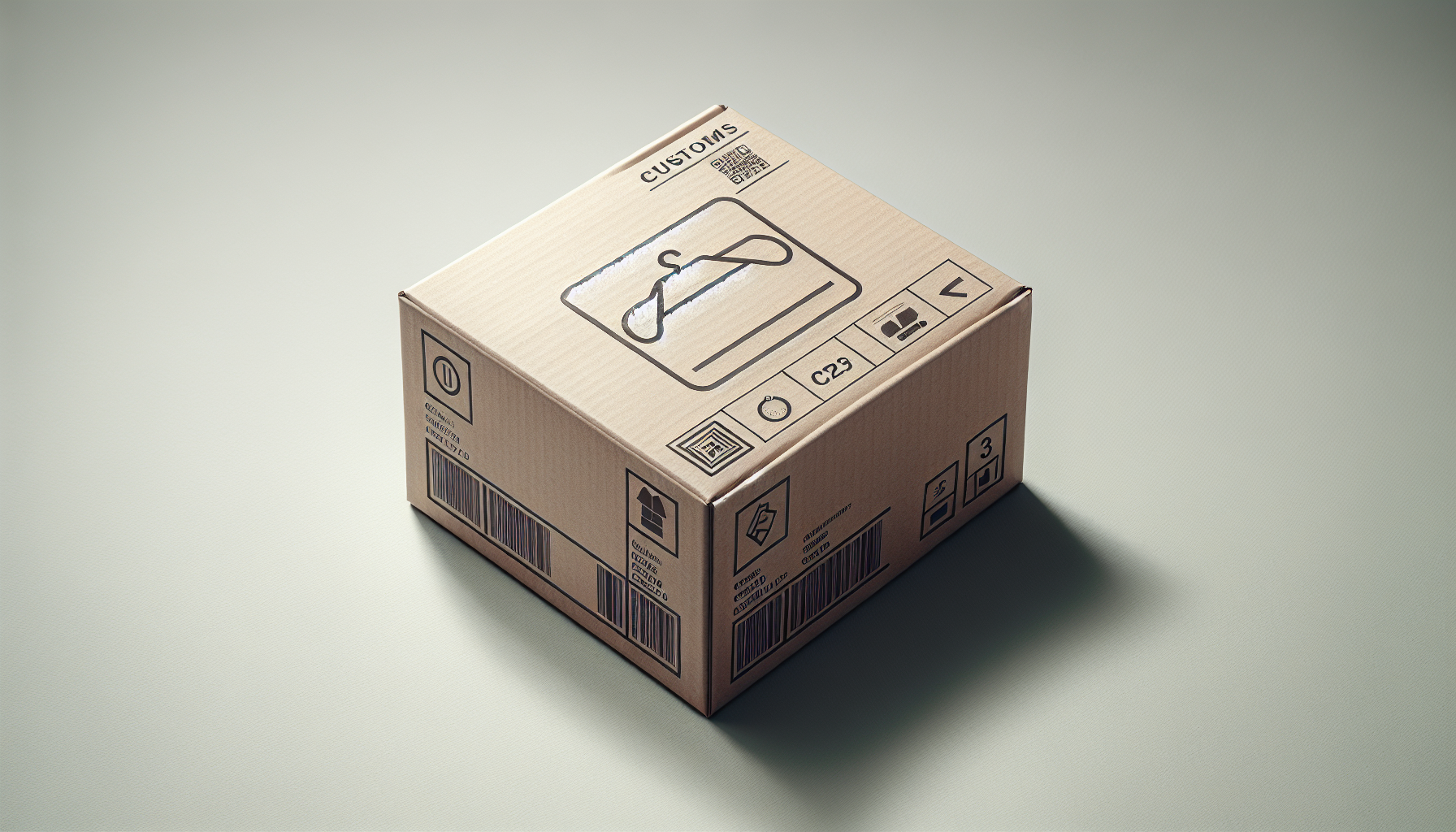ISF Filing For Small-Batch Apparel: Beginner-Friendly Guide
?Are you importing a few cartons of shirts or running a micro-brand and wondering how ISF affects your small-batch apparel shipments?

ISF Filing For Small-Batch Apparel: Beginner-Friendly Guide
Overview
This guide walks you through ISF (Importer Security Filing) specifically for small-batch apparel. You’ll get clear steps, compliance tips, and practical edge-case handling so you can file confidently and avoid delays or penalties.
What is ISF and why it matters
ISF is a U.S. Customs and Border Protection (CBP) requirement to submit specific cargo data before ocean shipments arrive in the U.S. For small-batch apparel, timely and accurate ISF filing prevents holds, fines, and unloading delays that can hurt your fulfillment timeline.
Basic definitions and requirements
You need to know a few core data elements that are required:
- Importer of Record (your business name and EIN/SSN)
- Consignee/Notify Party information
- Seller, Buyer, Shipper, and Manufacturer names and addresses
- Container stuffing location and Consolidator (if applicable)
- Country of origin and Harmonized Tariff Schedule (HTS) numbers
- Bill of Lading (B/L) number and vessel/voyage details
You must file the ISF at least 24 hours before the cargo is loaded onto the vessel destined for the U.S. Missing or inaccurate details can lead to CBP penalties.
Step-by-step ISF filing process (start-to-finish)
You’ll follow these steps to complete an ISF:
- Gather required data early—confirm manufacturer and supplier addresses, HTS codes, and the intended consignee.
- Choose who files: you, your customs broker, or a filing agent. If you use a broker, verify they’ll submit “ISF 10+2” data.
- Prepare HTS numbers for each SKU. For apparel, include fiber content and construction if needed for classification.
- Submit the ISF electronically via the Automated Broker Interface (ABI) or through your broker’s portal at least 24 hours before vessel departure.
- Monitor filing status and correct any “rejected” or “accepted with errors” messages immediately.
- Keep documentation for five years—CBP can audit or request proofs.
Typical timeline and practical tips
- Start collecting ISF data as soon as purchase orders are confirmed.
- If your apparel is consolidated, confirm the consolidator and container-stuffing location early.
- For late changes (like last-minute manufacturer swaps), file an ISF amendment immediately. Note that multiple amendments can attract scrutiny.
Edge cases you’ll face and how to handle them
- Split shipments: If your order is split across multiple containers/vessels, submit one ISF per vessel/house B/L and clearly indicate the container number.
- Dropshipping from foreign suppliers directly to customers in the U.S.: You’re still the importer of record if you control the transaction—file ISF accordingly.
- Missing HTS for novel garments: Use the most accurate HTS available and document your classification rationale in case of audit.
- Consolidated freight from multiple suppliers: Obtain the stuffing location and consolidator name for each consolidation event.
Compliance tips and penalties to avoid
- File on time: 24-hour rule is strict—late filing commonly results in a penalty up to $5,000 per violation.
- Accuracy matters: Misstated manufacturer or consignee can trigger inspections and delays.
- Bond considerations: If you import regularly, maintain a continuous customs bond; without it, you may need single-entry bonds for each shipment.
- Keep records: Save commercial invoices, packing lists, and ISF confirmation for five years.
Common mistakes small shippers make
- Rushing HTS classification without documentation.
- Not coordinating with consolidators, causing missing stuffing-location data.
- Assuming the freight forwarder automatically files ISF—always confirm.
- Using incomplete consignee information, which can cause cargo holds.
Quick ISF checklist for small-batch apparel
- Confirm importer of record name and EIN
- Get manufacturer and supplier addresses
- Identify HTS codes per SKU and country of origin
- Obtain booking/B/L number and vessel/voyage info
- Know container number and stuffing location (or consolidator)
- Decide who will submit ISF and confirm submission status
When to call an expert
If you face complex consolidation, frequent amendments, or cross-border dropship models, engaging an ISF filing professional can save time and penalties. For instance, if you need local, state-specific guidance, you might search for an ISF Filing Expert in California, United States to assist with California-origin complexities.
Final practical advice
Always treat ISF as part of your shipping checklist, not an afterthought. Early coordination between your supplier, freight forwarder, and filing agent will keep your small-batch apparel moving and your customers happy.
?Are you trying to file ISF for a limited run of jackets and unsure where to start?
ISF Filing For Small-Batch Apparel: Beginner-Friendly Guide
Quick overview
You’ll learn what ISF requires, how to collect the right documents, and the exact filing steps tailored for small-batch apparel brands. This version emphasizes practical problem-solving for first-time filers.
What ISF is—simple definition
Importer Security Filing is a mandatory pre-arrival data submission to U.S. CBP for ocean shipments. It’s designed to improve risk assessment before cargo reaches U.S. ports. For small-batch apparel, correct ISF prevents extra storage costs and unplanned inspection delays.
Required elements (straightforward)
You must provide specific details—here’s what to prepare:
- Importer of Record and consignee info
- Seller, buyer, shipper, manufacturer details
- Container stuffing location and consolidator name
- Country of origin and HTS numbers for each product
- Bill of Lading and voyage details
User journey: from order to delivery
You’ll typically move through these stages:
- PO confirmation and supplier verification
- Classification and data collection
- Submit ISF (yourself or via a broker) 24 hours before loading
- Receive ISF acceptance or rejection; act on rejects
- Shipment arrival, customs release, and pick-up/delivery
This journey completion ensures you know what to expect at each touchpoint.
Fresh perspective: small-batch benefits and pitfalls
Small batches give you flexibility but also risk higher per-unit delays if a hold occurs. Consider:
- Consolidation vs direct LCL: Consolidation can cut costs but requires accurate consolidator data.
- Single-entry vs continuous bond: Occasional importers may use single-entry bonds; frequent importers should maintain a continuous bond.
Edge cases and advanced compliance tips
- If manufacturer is unknown at booking time, file the most likely manufacturer and amend ISF later with documented justification.
- Third-party billing or cross-border fulfillment centers require clear consignee instructions in ISF to avoid misrouting.
- If cargo is containerized domestically before ocean loading, record the domestic stuffing location precisely.
Answering a common question
Q: What happens if I miss the 24-hour ISF deadline? A: Missing the deadline can lead to cargo being denied loading or CBP penalties. If a delay is unavoidable, work with your forwarder and file as soon as possible and document reasons—CBP may consider mitigating circumstances but penalties are still likely.
Practical documentation approach
- Keep a digital folder per shipment with invoices, packing lists, HTS rationale, and ISF filings.
- Use a consistent file naming convention for quick retrieval in audits.
Mistakes to avoid
- Relying on verbal confirmations for manufacturer data—get written addresses.
- Using general HTS codes like “apparel” without subheading detail.
- Forgetting to file ISF for consolidated shipments under house B/Ls.
When to hire help
If you find yourself repeatedly amending filings, dealing with multiple consolidators, or managing returns and repairs cross-border, consider bringing a consultant on board. An ISF Filing Expert Consultant can streamline filings and reduce repeat errors.
Final tips for smooth ISF filings
Start early, document everything, and maintain direct communication with your forwarder. The more organized your data upfront, the smoother your small-batch apparel imports will go.
?Do you need clarity about bonds and ISF when importing a few dozen garments?

ISF Filing For Small-Batch Apparel: Beginner-Friendly Guide
Intro
This version focuses on bonds, customs entry, and when you might need specialized filings. You’ll learn how customs bonding and ISF interact and how to minimize financial surprises.
ISF basics in plain language
ISF is required for ocean cargo entering the U.S. It’s a security measure; it’s not the same as customs entry, but errors in ISF can trigger holds that delay the entry process.
Customs bond and why it matters
A customs bond guarantees duties and fees to CBP. For small-batch apparel you can typically use:
- Single-entry bond: covers one shipment; good for infrequent importers.
- Continuous bond: covers multiple entries over a year; cost-effective if you import regularly.
A bond does not replace ISF—both are distinct compliance pieces.
Start-to-finish process highlighting bonds
- Confirm shipment and secure a bond (single-entry or continuous).
- Collect ISF data and HTS numbers.
- Submit ISF 24 hours before loading; ensure bond is in place before customs entry.
- File customs entry and pay duties upon arrival; bond covers payment if delayed.
Edge cases involving bonds and ISF
- Low-value shipments: even if duties are low or zero, ISF is still required for ocean shipments.
- Returns or repairs: these may be eligible for special duty treatment, but ISF still must reference the right transaction type.
- Missing bond: without an acceptable bond, CBP can refuse release and require a single-entry bond, which can be costly and time-consuming.
Compliance tips around bonds and filings
- Check your bond status before booking cargo—some brokers will require proof of bond to proceed.
- Keep bond numbers with your ISF documentation to show CBP if asked.
- For corrections, file ISF amendments quickly and keep notes to justify changes during audits.
Common question answered
Q: Does having a customs bond remove my need to file ISF? A: No. Bonding is separate from ISF. You need both for a compliant import process.
Practical checklist for bonding and ISF
- Decide on bond type based on import frequency
- Get bond number and attach to customs entries
- Collect ISF data and submit 24 hours before loading
- Keep five years of records
When to use an expert
If you’re dealing with tariff classification disputes or want to optimize duty costs, involving an ISF Expert with Customs Bond can be a strategic move to prevent costly entry errors.
Final thought
Bonds and ISF are partner requirements—manage both proactively and your small-batch apparel shipments will move through U.S. ports with fewer surprises.
?Are you coordinating trucking and last-mile delivery for a small apparel import and wondering how ISF ties in?
ISF Filing For Small-Batch Apparel: Beginner-Friendly Guide
Short introduction
This guide links ISF obligations to downstream logistics such as customs clearance and trucking. You’ll learn how to avoid hold-ups once cargo clears customs.
ISF summarized
ISF is a pre-arrival filing for ocean shipments; it’s submitted to CBP to screen cargo. Proper ISF means fewer inspections and quicker release to your carrier.
How ISF interacts with customs clearance and trucking
Once CBP releases the cargo, you’ll need customs clearance documents and a trucking plan. If ISF contains incorrect consignee or notify party details, your trucker could be turned away at the terminal, causing demurrage and storage fees.
Step-by-step integration with trucking arrangements
- Prepare ISF and designate correct notify party and consignee who will handle clearance.
- Confirm carrier pick-up windows and terminal requirements.
- Once ISF accepted and cargo arrives, monitor customs release status via your broker.
- Schedule trucking only after release to avoid rejections and fees.
Edge cases with trucking and ISF
- Terminal appointment rejections due to incomplete ISF details: verify container numbers and consignee info.
- Intermodal transfers: if cargo shifts from ocean to rail or truck before final delivery, ensure the chain-of-custody is documented and ISF records align.
- Last-minute reroutes: if you redirect cargo to a different consignee or location, file an ISF amendment and coordinate with your trucker to avoid pickup denials.
Compliance tips to keep trucking smooth
- Confirm that the trucking company accepts the documentation format your broker uses.
- Use a designated entry point and terminal familiar with small shippers; smaller terminals may be more forgiving with paperwork.
- Maintain real-time communication between your broker and trucker.
Common logistics question
Q: Can my trucker pick up without ISF acceptance? A: Usually no. Most terminals require ISF acceptance and customs release before allowing pickup. Scheduling before release risks rejection and added costs.
Practical checklist before scheduling trucking
- Verify ISF acceptance status
- Confirm customs entry and duties paid or bonded
- Provide trucker with proper release documentation and contact info
- Align terminal appointment times with carrier availability
When to involve specialized help
If you have complex last-mile routing, multiple pickups, or special consolidation scenarios, an ISF Expert with Trucking Arrangement can coordinate paperwork and carrier scheduling to reduce demurrage risk.
Final advice
Coordinate ISF filing with trucking plans from the outset so you avoid wasted truck trips and unexpected fees. Clear communication and accurate data are your best defenses.
?Do you want an accessible path to consistent ISF compliance for your small apparel brand?
ISF Filing For Small-Batch Apparel: Beginner-Friendly Guide
What this guide covers
This version gives a rounded, practical approach including audits, recordkeeping, and how to answer CBP questions when they arise. You’ll gain actionable steps to make ISF filing routine.
Fundamental ISF definition
ISF requires specific shipping and product data to be filed before ocean cargo departs for the U.S. This helps CBP evaluate risk and target inspections.
Simple list of required ISF items
- Importer of Record (name and EIN)
- Consignee/Notify Party
- Seller, Buyer, Shipper, Manufacturer names and addresses
- Container stuffing location and consolidator
- Country of origin and HTS number(s)
- Bill of Lading and vessel/voyage number
Complete workflow from order to customs audit
- Order confirmation and supplier contract—collect addresses and manufacturer information.
- Classification—assign HTS codes and note country of origin.
- Booking—get B/L and vessel info from the forwarder.
- ISF submission—file at least 24 hours before loading.
- Arrival—coordinate customs entry and choose bond type as needed.
- Release and delivery—truck to your warehouse or fulfillment center.
- Recordkeeping—retain documents for CBP audits for five years.
This user journey completion helps you anticipate each step and ensures you have documentation ready for audits.
Fresh perspective: using tech to reduce errors
Consider using a cloud-based shipment folder or your broker’s platform to auto-populate repeated ISF fields. Automation reduces human error, especially for recurring SKU lines.
Compliance tips and audit preparedness
- Keep a clear audit trail for HTS decisions; if CBP questions your classification, you’ll want written rationale and supplier documentation.
- Document any ISF amendments with timestamps and reasons in case of later review.
- Train staff or your broker on common apparel nuances (fiber content, tariff subheadings) to avoid misfiling.
Typical mistakes and how to avoid them
- Inaccurate manufacturer address: verify via supplier contracts or photos of the factory.
- Missing consolidator: always confirm the consolidator and stuffing site at booking.
- Late amendments: if changes happen, amend ISF immediately and log why.
Answering a common compliance question
Q: What should I do if CBP audits my ISF and requests proof? A: Provide invoices, packing lists, supplier declarations, and HTS rationale. Prompt, documented responses reduce the likelihood of fines.
Practical checklist for ongoing compliance
- Maintain a digital folder per shipment
- Standardize HTS classification process
- Confirm bond type every fiscal year
- Schedule brief staff/broker reviews of ISF procedures quarterly
When to bring in help and what to expect
If you’re scaling or facing frequent audits, ISF Expert Services can help formalize processes and reduce risk. An expert can also train your team and conduct mock audits to reveal weaknesses.
Final takeaway
Treat ISF as an essential part of your import workflow. With the right routines, documentation, and occasional expert support, your small-batch apparel imports can be predictable and compliant.
